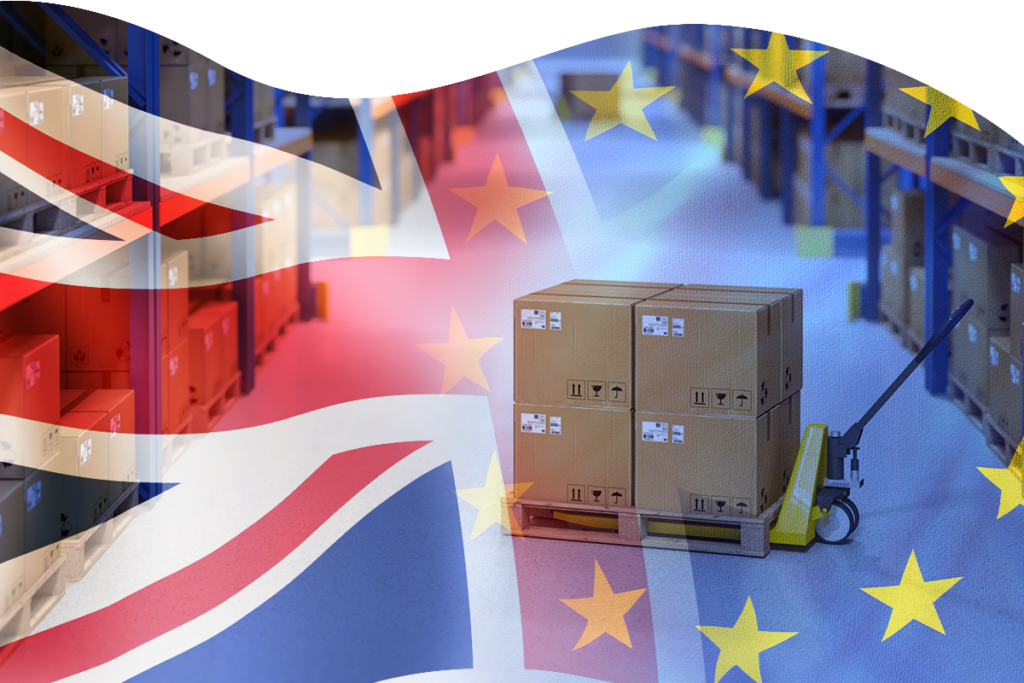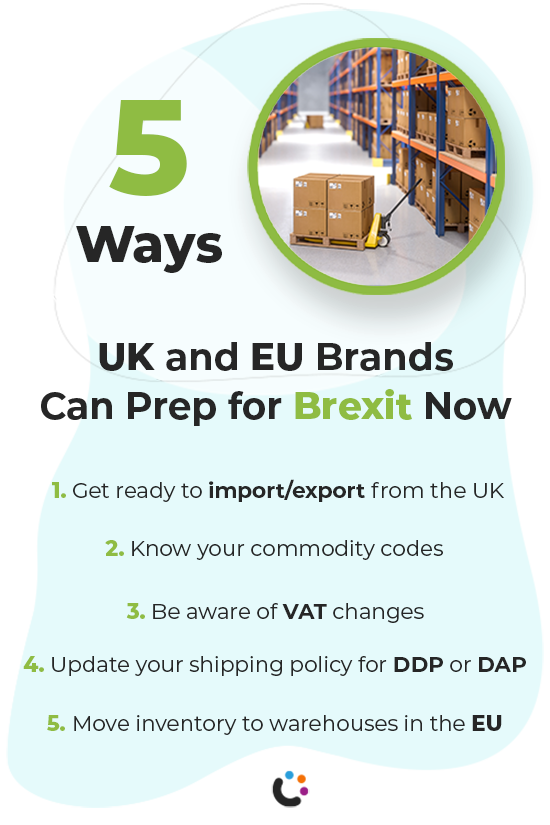Prep for Brexit: 5 Ways UK and EU Brands Can Take Action Now

Brexit is bringing major changes to how businesses in the UK trade with their European partners. For the EU, seamless trade between member countries is facilitated by the Customs Union which sets standard tariffs for goods entering the EU from non-members countries. The Single Market guarantees goods and money can move freely between EU member countries.
As Brexit comes into effect, the UK will become a “Third Country” (non-member) to the EU. This means UK-based businesses will no longer be a part of the Single Market and its harmonized regulations. Instead, UK business will now trade with European partners based on the terms established in the recently agreed upon EU-UK Trade & Cooperation Agreement.
The agreement establishes zero tariffs on goods traded between the UK and the EU, so long as the goods meet the relevant rules of origin. The 100% tariff liberalization is a positive step towards future cooperation. However, there is still much EU and UK brands need to do to prepare as trade is now more complicated than it was before.
How Brexit Will Impact UK and EU Brands
It is uncertain what long-term impact Brexit will have on the UK and the EU member countries. However one thing is clear, brands must prepare for more compliance requirements and more taxes as the customs border between the UK and EU is reestablished, introducing new regulations, duties, and VAT (value-added tax) rules for goods moving in and out of the UK.
UK brands selling on Amazon will be severely impacted by the changes as Amazon’s UK FBA operations will no longer be a part of the European Fulfilment Network. This means that Amazon Fulfilment Centres in the UK will no longer fulfill orders being delivered to the EU. Products listed by third-party UK sellers will not be Prime-eligible for customers located in the EU, eliminating a large customer base of EU shoppers who predominantly purchase products that are Prime eligible.
Steps UK and EU Brands Can Take to Prepare for Brexit
 Here are five steps UK and EU brands can take to proactively prepare for the changes caused by Brexit:
Here are five steps UK and EU brands can take to proactively prepare for the changes caused by Brexit:
1. Get Ready to Import and Export from the UK
Brands located in the UK that want to export their goods to countries in the EU will now need to take additional steps to ensure they are in compliance with the new regulations.
To export goods to EU countries from Great Britain, you will need to get an Economic Operator Registration number and identification (EORI) number that starts with GB. Brands that currently have an EORI number that doesn’t start with GB will have to apply for a new one. If you plan to export from Northern Ireland, you will need to get an EORI number starting with XI.
Depending on your VAT taxable turnover, your business may need to register for VAT. You may also need to obtain a license to export based on the type of goods you are sending.
Brands looking to import goods into the UK from an EU member country will need to take similar steps to ensure all deliveries go smoothly. Those importing goods into Great Britain require an EORI number that starts with GB. Businesses that import goods into Northern Ireland must get an EORI number starting with XI.
You can find a step-by-step list of everything you need to do to prepare for importing and exporting from the UK in GOV.UK’s Brexit Transition Guide.
2. Know Your Commodity Codes In Advance
It is important for brands to be familiar with the standardized commodity identification codes for all the products they sell. These codes are assigned to every category of goods to help classify imports from outside the EU. They will inform you of the duty and VAT ratings you’ll be charged for the goods and whether the product requires an import license.
Knowing the appropriate codes for your products is critical as using the wrong codes can result in paying the wrong tariffs or having goods blocked at customs. To find the right commodity codes, check out the World Customs Organisation website to learn more about how the system works and then search for your codes in the HTS database.
3. Be Aware of VAT Changes
If your brand sells goods across borders you will have to prepare for the changes to VAT. Until recently, VAT was collected during importation at customs. Beginning January 1, 2021, the VAT is now be collected at the point of sale for goods under £135 in value. Brands (or online marketplaces) selling items to customers in the UK are now responsible for providing the customer an invoice that displays the UK VAT tax.
This means that if you are a seller located in the US, you will need to collect and account for VAT when selling to UK customers and you must disclose such on your invoices.
4. DDP vs DAP: Update Your Shipping Policy
Brands must adjust their shipping policies to clarify who is responsible for paying any taxes and duties on items moving across borders. You’ll want to get familiar with Delivery Duty Paid (DPP) and Delivery at Place (DAP), the two primary choices for international commercial shipping terms.
The core difference between the two is when duties and taxes are paid. With DDP, the seller collects customs duties and import taxes at the point of sale. This option is highly recommended as opting for DAP would make the customer responsible for paying import costs after the shipment reaches customs before the package can be released for delivery.
If you choose to use DDP it is important that your shipments have a DDP shipping label. This will ensure that your deliveries pass through customs without issue and that customers aren’t prompted to pay any import costs.
5. Move Inventory to Warehouses In the EU
If you are a UK-based brand, now is an opportune time to consider partnering with a global fulfillment partner and moving inventory into EU warehouses. By moving inventory into EU warehouses you can help streamline fulfillment and provide a better delivery experience for your European customers. This will also ensure sufficient stock on the other side of the border while reducing the complexity of having to continually pass goods through customs for every order.
Where Can I Learn More About How to Prepare for Brexit?
If you want to learn more about how you can prepare for Brexit, check out the following resources: